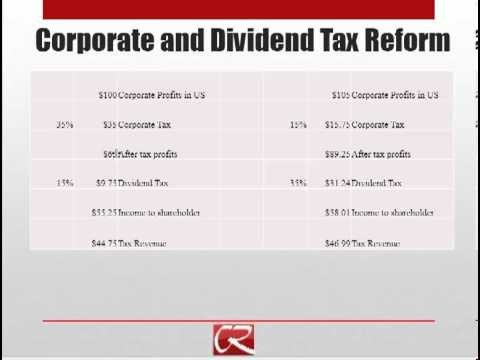Does Dividend Stripping Work The Basics
Post on: 19 Май, 2015 No Comment

Australian investors are blessed with an abundance of high yielding, fully franked shares that offer great opportunities for tax effective income generation. The systematic buying and selling of shares for dividends is sometimes known as dividend stripping. Dividend stripping is the process of buying shares cum-dividend, holding the share for the dividend and franking credit, then selling the share ex-dividend and moving on to the next opportunity. Each dividend season, financial journalists roll out articles about dividend stripping without providing hard evidence that it actually works. Nevertheless, it is a popular tactic among actively traded investment funds with the objective of generating consistent dividend income, franking credits and ideally, capital gains.
But is dividend stripping really worth the effort? Are we not just feathering our broker’s nest with the trading commissions we are paying? Aren’t we just exchanging dividend income for capital losses? In simple terms, does dividend stripping give us an edge over the broader market or a stock specific buy and hold strategy?
Examination of historical dividend and share price data by Dividends.com.au has determined that dividend stripping of S&P200 index shares can provide a significant edge of more than 6% over the S&P 200 index for a holding period of 46 days as long as some simple rules are followed.
We will come to the empirical analysis and simple rules for successful dividend stripping in the second and third instalments of this article, but in the meantime here is a recap of the important aspects of dividend stripping.
Dividends and Franking Credits
Australian companies usually pay dividends twice per year although many listed trusts and ETF’s pay dividends quarterly and some monthly. Dividends are highly valued by investors as they represent a known, tangible return on their investment. In effect dividend returns are more certain than capital gains. In addition, many Australian shares pay franked dividends which provide investors with franking credits. That is investors are credited by the Australian Tax Office for tax already paid by the company in earning the dividend. This has the net effect of inflating the value of the dividend to the investor, making them even more desirable. It is not hard to imagine a situation where shorter term investors flood into high yielding, fully franked stocks prior to them going ex-dividend in preference to non-dividend paying stocks.
The 45 Day Rule
To prevent savvy traders blatantly dividend stripping by buying on the last cum-dividend date and selling on the first ex-dividend date to accumulate near risk free franking credits, the Australian Government legislated for the 45 Day Rule. This states that if you are going to exceed $5000 in franking credits in the year then you must satisfy the 45 day holding period requirement. The shares must be held for 45 days between the buy and sell dates and the position must maintain a minimum 30% delta (i.e. you can’t hedge all of the stock specific risk away with options or other derivatives – although you can hedge 70% of it, but that’s a different story). It doesn’t matter if you buying the shares 46 days before the ex-dividend date and selling on the ex-dividend date, or buy on the last cum-dividend date and sell 46 days later, or buy and sell anywhere between these two dates – you will still qualify for the franking credit.
Cum-Dividend Share Price Behaviour
Quantitative analysis shows that high yielding, fully franked shares often outperform the market as traders take positions prior to the ex-dividend date. Macquarie Research in 2005 quantified the average excess return as 2.5% in the 46 days prior to the ex-dividend date. Our own analysis finds the effect can be even stronger. Bear in mind that this is also a period when earnings updates and reports result in stock specific volatility and sometimes severe corrections in individual stock prices.
Ex-Dividend Date Share Price Behaviour
All other things being equal, the share price should theoretically fall by the amount of the dividend on the ex-dividend date. Usually it will fall by only the face value of the dividend, not the franking credit. Although sometimes in high yielding, slow growth stocks that have been heavily bought into for the immediate, short term dividend, they will fall by the grossed up value of the dividend or further on the ex-dividend date and continue to fall for a few days.
The fall in the share price on the ex-dividend date can result in a capital loss which can sometimes be applied against previous capital gains to reduce capital gains tax liability.
Some stocks are heavily held by overseas investors. Overseas investors are not eligible for franking credits and anecdotally it has been suggested that they often sell out just prior to the stock going ex-dividend, only to buy it back after it goes ex-dividend possibly sells off further.
Post Ex-Dividend Share Price Behaviour
In a bull market, low yielding stocks will recover quickly the price lost on the ex-dividend date and will continue to churn higher. Higher yielding stocks can take much longer with often the ex-dividend date representing the high water mark in the shares price until the next dividend becomes due.

The Perfect Scenario
The ideal dividend strip is as follows. The market is steady, perhaps even trending up slightly. You identify a high yielding stock with good fundamentals from your target list and buy in with 12.5% of your capital 46 days prior to the ex-dividend date. The share price rallies as other traders jump on to the stock in anticipation of the large, fully franked dividend. The earnings announcement comes and goes without any significant hiccup. You then sell at the open on the ex-dividend date for a small but respectable capital gain, you qualify for the franking credit and the dividend payment date is only two weeks away so your will soon receive the cash dividend. You immediately reinvest your funds into the next dividend opportunity from your target list.
Real Life Examples
In reality, things rarely go so smoothly. For real life examples we will look at Australia and New Zealand Banking Group (ANZ), Macquarie Group (MQG), National Australia Bank (NAB) and Westpac (WBC) which all went ex-dividend in May 2013. The details of this real life example are provided in Table 1 below.
Table 1: Dividend stripping example from May 2013
In the next post we examine the empirical evidence as to whether or not dividend stripping can provide a sustainable edge over the Australian share market.
Disclaimer
The information provided on this website is for use of a general nature only and is not intended to be relied upon as, nor to be a substitute for, specific professional or investment advice. The team at Dividends.com.au are not lawyers, financial planners, investment advisers, or accountants. So, before taking any action or risking any money, you should always check with your own qualified professional advisers.














